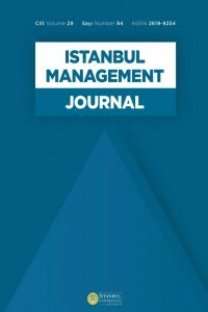İstanbul’un Trafik Planlama Politikalarının Çevre ve Sosyoekonomik Açıdan Değerlendirmesi
Trafik planlamasında mevcut şebeke altyapısı dikkate alınarak trafik planlaması yapılmaktadır. Bu planlama esnasında trafikteki yoğunluklar kontrol edilmeye çalışılmakta, trafiğin zaman ve maliyet kaybı üzerindeki etkisi azaltılmaya çalışılmaktadır. Ancak trafiğin oluşturduğu zaman ve maliyet kayıplarının haricinde planlamaların odak noktasında bulunmayan sosyoekonomik etkiler de bulunmaktadır. Yapılacak planlamalarda oluşabilecek sosyoekonomik etkilere ve bu etkilerden kimlerin nasıl etkilendiğine de dikkat edilmesi gerekmektedir. Bu amaçla, yerel yönetim yetkilileri, sosyal bilimciler ve sivil toplum kuruluşlarının (STK) bir araya gelmesi ile gerçekleştirilen çalıştay ve birebir görüşmeler ile İstanbul odaklı trafik planlamasında göz ardı edilen sosyo-ekonomik ve çevresel etkilerin neler olduğunun belirlenmesi hedeflenmiştir. Gerçekleştirilen saha çalışması kapsamında uzmanların görüşleri Ortak Akıl Platformu metodolojisi ile elde edilmiştir. Bu aşama sonucunda elde edilen uzman görüşlerine dayalı bilgiler metin madenciliği yetenekleri ile sınıflanmış ve incelenmiştir. Analizler sonucunda, yatırımlar ile doğacak sosyoekonomik etkilerin yeterli seviyede incelenmediği ve bu durum ile ilgili çözüm önerileri tartışılmıştır.
Anahtar Kelimeler:
İstanbul trafik planlama, Sosyo-ekonomik etki, Metin madenciliği, Nitel araştırma
İstanbul’un Trafik Planlama Politikalarının Çevre ve Sosyoekonomik Açıdan Değerlendirmesi
Traffic planning is made by considering the existing transportation network infrastructure. While this planning is made, the main objectives are to decrease total amount of time lost during traffic and its monetary cost. However, there are socioeconomic effects that are neglected in planning, except for the time and cost losses generated by traffic. It should be noted that the socioeconomic impacts that may occur in the planning and the impacts of these effects might create a huge impact on daily life of the inhabitants. For this purpose, it is aimed to determine the socio-economic and environmental impacts which were not the main consideration in the previous studies and management phases in Istanbul. In this study, the socio-economics impacts of the traffic in the city is considered and discussed by the invited experts in the field which are local government officials, social scientists and non-governmental organizations (NGOs). Within this scope, the opinions of the experts were obtained by the method of Common Mind Platform. The results of the workshop are evaluated with the text mining methods. As the result of the study, it is seen that the socio-economic impacts that will caused by transportation investments are not considered adequately and how to improve this situation is discussed.
___
- Havard, S., Deguen, S., Zmirou-Navier, D., Schillinger, C., & Bard, D. (2009). Traffic-Related Air Pollution and Socioeconomic Status A Spatial Autocorrelation Study to Assess Environmental Equity on a Small-Area Scale. Lippincott Williams & Wilkins, p. 223-230.
- National Research Council (2005). Assessing and Managing the Ecological Impacts of Paved Roads, National Academy of Sciences, p. 220-221.
- National Research Council (2013). Effects of U.S. Tax Policy on Greenhouse Gas Emissions, National Academy of Sciences, p. 152-156.
- Hasslberg, M., Laflamme, L., & Weitoft, GR. (2001). Socioeconomic diVerences in road traYc injuries during childhood and youth: a closer look at diVerent kinds of road user. Epidemiol Community Health, p. 858–862.
- Atyaç, B. P., Çelik, F. ve Türe, F. (2007). Ülkemiz ulaştırma politikalarının doğu Karadeniz bölgesi’nin kalkınması üzerindeki etkileri . İnşaat Mühendisleri Odası 7. Ulaştırma Kongresi, s. 137-143.
- Cakmak, S., Hebbern, C., Cakmak, JD., & Vanos J. (2016). The modifying effect of socioeconomic status on the relationship between traffic, air pollution and respiratory health in elementary schoolchildren. Journal of Environmental Management, 1-8.
- Cesaroni, G., Boogaard, H., Jonkers, S., Porta, D., Badaloni, C., Cattani, G., Forastiere, F., & Hoek, G. (2012). Health benefits of traffic-related air pollution reduction in different socioeconomic groups: the effect of low-emission zoning in Rome. Occupational & Environmental Medicine, 133-139.
- Gauderman, W., Vora, H., McConnell, R., Berhane, K., Gilliland, F., Thomas, D., Lurmann, F., Avol, E., Kunzli, N., Jerrett, M., & Peters, J. (2007). Effect of exposure to traffic on lung development from 10 to 18 years of age: a cohort study. The LAnget, 571-577.
- Öztürk, Z. (2005). Karayolu Şehiriçi Trafikte Tıkanma Maliyeti. İnşaat Mühendisliği Sorunları Kongresi, 484-496.
- SSML, (2016). TOMTOM 2015 Traffıc Index: Independent Analysis Report, Civil Engineering, University of Stellenbosch.
- Rabiee, F. (2004). Focus-group interview and data analysis. Proceedings of the Nutrition Society, p. 655-660.
- Çokluk, Ö., Yılmaz, K. ve Oğuz, E. (2011). Nitel Bir Görüşme Yöntemi: Odak Grup Görüşmesi. Kuramsal Eğitimbilim, 95-107.
- TÜSSİDE-1, T. (2016, 08 28). Çalıştay Yöntemi (OAP). www.tusside.gov.tr: http://tusside.tubitak.gov.tr/tr/yontemlerimiz/Calistay-Yonetimi-OAP adresinden alındı Web1. www.iett.istanbul.tr (2015, Eylül 30). İETT’den Bisikletliye Özgür ve Güvenli Ulaşım, https://www.iett.istanbul/tr/main/news/iettden-bisikletliye-ozgur-ve-guvenli-ulasim/1985, adresinden alındı.
- Embark, (2014). İstanbul’da Güvenli Bisiklet Yolları Uygulama Kılavuzu. İstanbul: İstanbul Kalkınma Ajansı, p.8.
- TÜSSİDE-2, (2016). İett Toplu Taşıma Odaklı Trafik Planlaması Projesi, Lastikli Ulaşım Olanaklarının Ortaya Konulması Raporu
- TÜSSİDE-3, (2015). İett Toplu Taşıma Odaklı Trafik Planlaması Projesi -BRT Sistemi (Metrobüs) Ek Şerit Etki Analizi ve Değerlendirilmesi Raporu
- TÜSSİDE-4, (2016). İett Toplu Taşıma Odaklı Trafik Planlaması Projesi, İstanbul İçin Yeni Hızlı Otobüs Taşımacılığı Sistemleri Raporu.
- Başlangıç: 1975
- Yayıncı: İstanbul Üniversitesi İşletme Fakültesi İşletme İktisadı Enstitüsü
Sayıdaki Diğer Makaleler
Teknoloji Oryantasyonu: Yeniden Değerlendirme ve Gelecek Çalışmalar için Ajanda
Yeşil Örgütsel Davranış Ölçeği: Bir Ölçek Geliştirme Çalışması
Çokuluslu İşletmelerin Yönetici Kaynakları Üzerine Kavramsal Bir Çalışma
Haldun Şecaattin ÇETİNARSLAN, Esin CAN
İslami Finansal Okuryazarlık ve Helal Okuryazarlık İlişkisi
İstanbul’un Trafik Planlama Politikalarının Çevre ve Sosyoekonomik Açıdan Değerlendirmesi
